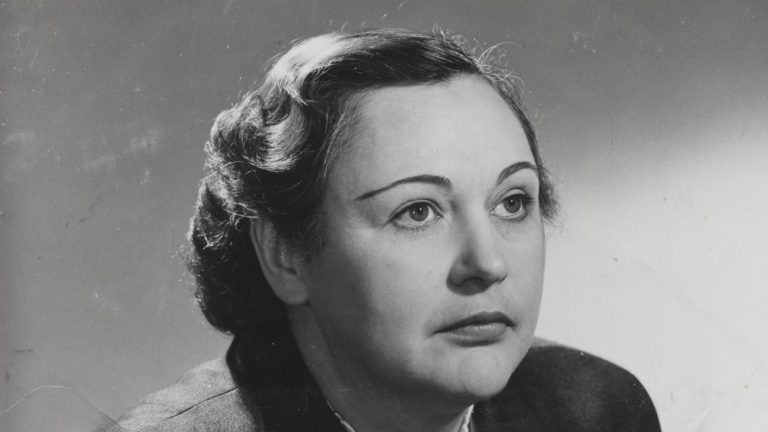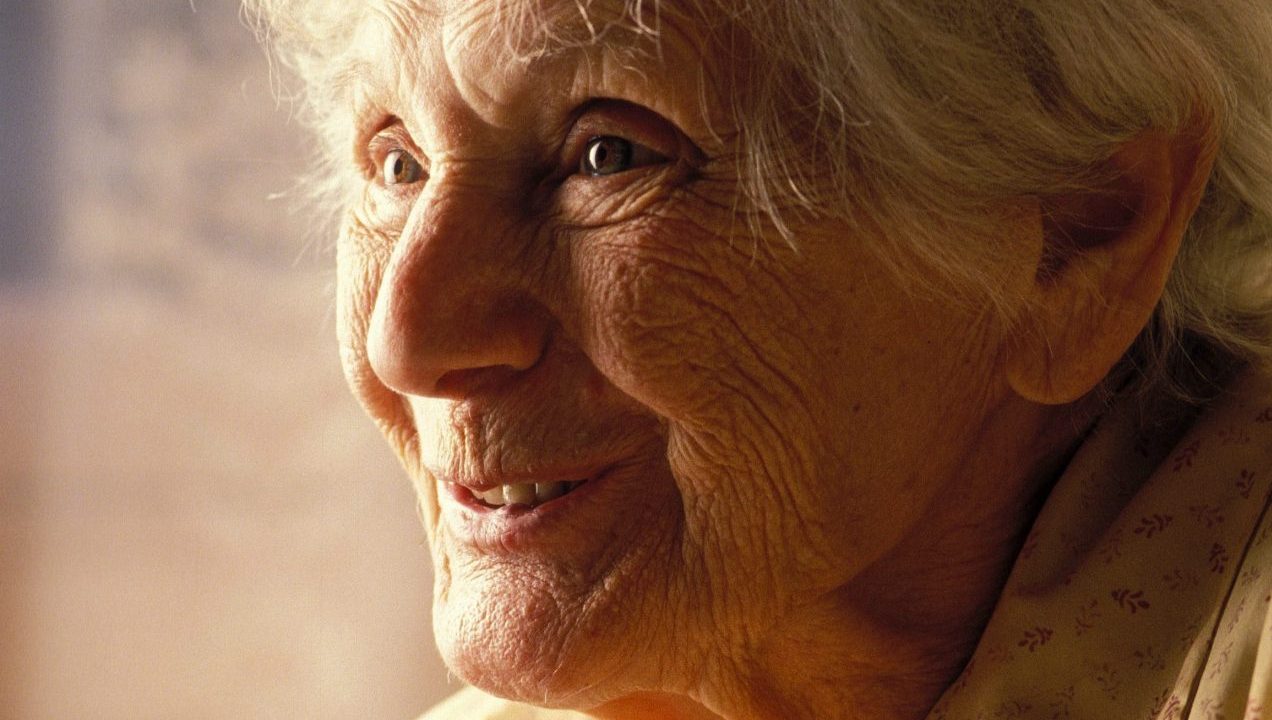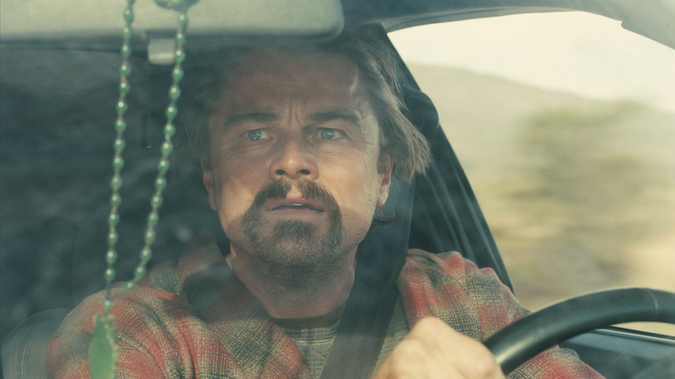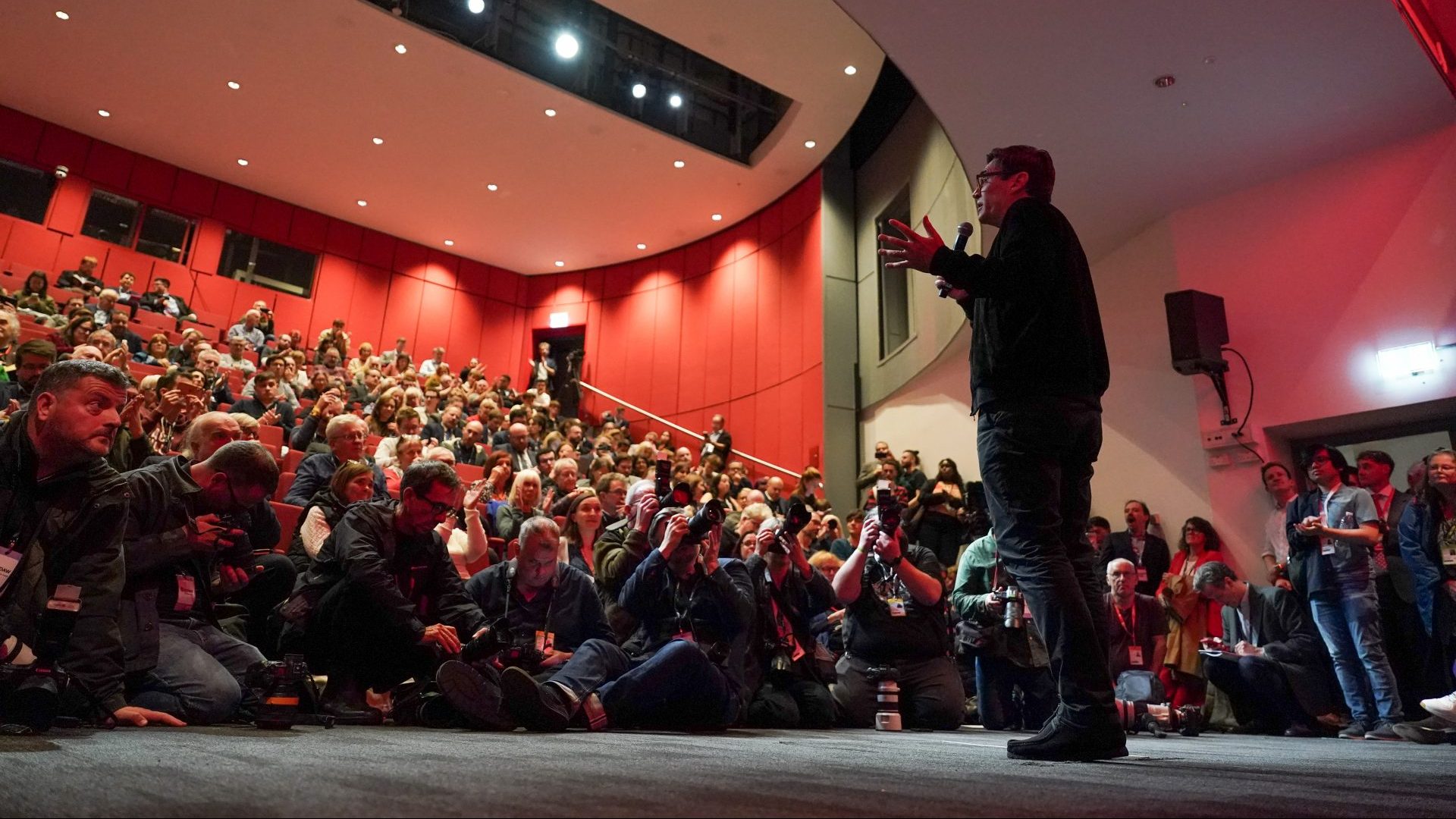It was the first time she had ever seen her husband’s grave. Towards the end of the filming of Schindler’s List, Emilie Schindler stood in Jerusalem’s Mount Zion cemetery and in accordance with tradition, placed a pebble on the tomb of the man who had abandoned her 36 years earlier. Then she spoke to him: “I have forgiven you everything.”
Emilie had been on her parents’ farm when she first met Oskar – in fact, her life was bookended by time spent on her own, surrounded by animals, farmland and nature. In 1928, she was 20 and living a life of seclusion, caring for a father who had returned from the first world war a shell-shocked, broken man. She found solace in looking after him and the animals.
One day, two farm machinery salesmen arrived by car – a Mr Schindler and his son Oskar. This chance meeting would lead to the saving of 1,200 lives, to marriage, mistrust and betrayal and to a multiple Oscar-winning film from which Emilie felt somewhat excluded.
The change in her life was sudden and dramatic. A photograph of the Schindlers together on their wedding day shows Emilie looking bewildered and Oskar looking assured.
But confidence can lead to arrogance, and it is well documented that Oskar had numerous affairs and fathered children with at least two other women. After the couple parted, Emilie never stopped wearing her wedding ring and said that given the choice, she would marry Oskar again.
She did, though, feel deceived and abandoned. After he left her, she refused to answer his letters and did not attend his funeral in Frankfurt in 1974. “She’d break down sometimes and start crying,” Emilie’s end-of-life caregiver Leandro Cosiforti said. “This woman had suffered a great deal. Sometimes she told me about the cruelty she had witnessed.”
The Schindlers became witnesses and participants in history when, more by accident than design, they acquired an enamelware factory in Krakow during the Nazi occupation of Poland. From the factory floor, they had front-row seats to an unfolding tragedy.
Jewish people were being dehumanised, driven out of their homes, destroyed. Although the opportunistic Oskar was a Nazi Party member, the Schindlers shared a desperation that they had to help.
In Schindler’s List, Emilie’s part in what happened next is acknowledged, but the film does not reveal much of her as a person, while Liam Neeson is given a flawed hero’s role. She does feature more prominently in Schindler’s Ark, the Booker-winning novel that got the attention of Steven Spielberg.
But to the survivors, the people whose names were on “the list”, Emilie was integral to everything that happened. They saw the Schindlers as a team of equals.
Suggested Reading

Nancy Wake, the White Mouse the Gestapo couldn’t corner
At first, the Schindlers attempted to employ as many Jews as they could. Then, with the course of the war turning and Nazi high command keen to speed up departures for Auschwitz, the couple were allowed to move their factory if it could be turned into a munitions supplier.
It was Emilie who organised the move to Brünnlitz, Czechoslovakia. The historian Professor David Crowe said: “Oskar did not have the emotional stability and maturity to deal with this. Emilie had to step into this void… She knew the danger he was in, and she wasn’t scared.”
When the SS asked who the Schindlers wanted as staff in the new factory, Crowe says, “they said: ‘We will make you a list…’” It contained the names of Jews who would otherwise have been bound for Auschwitz, who the couple now insisted were munitions experts vital to the factory’s success.
As money and supplies became scarce towards the war’s end, Emilie kept more than 1,000 Jewish workers supplied with food and medicine, paid for by selling her jewels. When the long-hoped-for moment finally happened, it was the Schindlers who gave them the news: the war is over. You are free to leave.
Despite the joy of peace, the Schindlers had nothing. Oskar had been arrested and interrogated several times and was at risk of being executed. They were now on their own; no business, no assets, no money.
If Emilie had hoped the end of the war would change her husband, she was wrong. While he slept around, she had several miscarriages and then a stillborn baby. When Oskar visited her in hospital, he took his girlfriend along with him.
With war over and their factory gone, the Schindlers went to Argentina, only for Emilie to discover that Oskar had invited his mistress along. His business success regressed to his pre-war form, with poor decision-making and substantial financial losses. The affairs continued until Emilie was eventually on her own for good. Oskar abandoned her, moving back to Germany to start a new life in Frankfurt.
Not only was Emilie alone with very little income, she became aware that honours and acclaim were starting to roll in for her husband as word spread about what “he” had done. Emilie’s name was barely mentioned. Meanwhile Oskar wrote to her to let her know that without her, he was getting fat on shrimps and good wine.
What do you do when the person you have married doesn’t reciprocate your love and dedication? “First there were chickens and otters,” Emilie said about the later years of her life. “Then I kept cattle and got rid of everything else. I decided I’d had enough of it all.”
After Oskar’s death, she started to get some of the attention he revelled in. But, says Caroline Goodall, who played Emilie for Spielberg, “It’s very hard when you have to go around, accepting humanitarian awards on behalf of your dead husband who abandoned you.”
How remarkable then that after all that, as Emilie stood at Oskar’s grave, her thoughts were only of those they had saved almost 50 years earlier, and of forgiveness.



